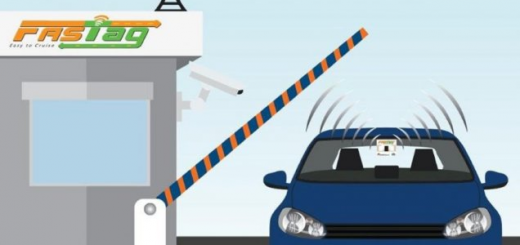Auto industry looks to sustain growth momentum in 2023
While the passenger vehicles (PV) segment is set for record sales in 2022 despite the lingering effects of supply chain constraints and semiconductor shortages, the two-wheeler space is yet to see sustained sales buoyancy after having suffered for most of the year.
The Indian automobile industry is setting out on a journey with hopes for a sustained growth momentum in 2023 and further embracing clean technology amid the lurking speed breakers of rising interest rates and cost increases due to new emission and safety norms, having witnessed a strong comeback from the COVID-led downturn this year.
While the passenger vehicles (PV) segment is set for record sales in 2022 despite the lingering effects of supply chain constraints and semiconductor shortages, the two-wheeler space is yet to see sustained sales buoyancy after having suffered for most of the year.
According to industry estimates, PV sales can reach around 38 lakh units this year.
The three-wheelers and commercial vehicles segments have also witnessed good growth in 2022 compared to 2021, albeit on a low base of last year, which was affected by the second wave of COVID-19 and manufacturers will be keen to carry forward the momentum to the new year.
As per industry observers, 2023 will also see acceleration in adoption of electric vehicles, which has already started taking root in 2022, especially in the two-wheelers segment.

For potential passenger vehicle buyers, 2023 may not ring in the best news as vehicle prices are set to increase next year as companies prepare to conform to stricter emission norms which kick in from April 1, 2023.
Many manufacturers like Maruti Suzuki, Tata Motors and Hyundai have already announced plans to increase prices from January next year.
Besides, rising interest rates and not so bright global economic situation and its impact on India in the days to come are some of the factors which are keeping the industry in a cautious mode.
“Increase in price always has a certain negative impact on sales. But we still do not know how much the prices will go up and what will happen to input cost and foreign exchange. These are uncertainties which will always be there,” Maruti Suzuki India Chairman R C Bhargava told PTI.
He, however, stated that the domestic car industry has revived in the last few months and the semiconductor shortages are also going to abate in 2023.
“Putting it all together, our estimate would be that next year would probably be a reasonably good year for the industry. I think we should do at least as well if not better than 2022,” Bhargava said.
The country’s largest carmaker will keep bringing in cars, especially more SUV models, to cater to the customer demand, he noted.
Industry body Society of Indian Automobile Manufacturers (SIAM) Director General Rajesh Menon said the passenger vehicle industry adopted the second phase of fuel efficiency regulations this year from April 2022 and is gearing up to meet the stringent second phase of BS VI emission norms from April 2023.
Discussions are also underway to implement various new safety regulations for passenger vehicles in 2023, he said.
“Implementation of these new regulations could raise the cost of the vehicles and this coupled with global recessionary trends are of concern going forward in the year 2023,” Menon pointed out.
Besides, with rising inflation, the RBI was compelled to increase the repo rates a couple of times this year and this increase in interest rate can impact the demand trends for all vehicle segments, he cautioned.
Though the overall numbers from January to November 2022 have shown appreciable growth for all segments including passenger vehicles, this has been achieved in the backdrop of a low base in 2021, which was affected by the second wave of COVID-19, Menon stated.
Mahindra & Mahindra (M&M) Executive Director (Auto and Farm Sectors) Rajesh Jejurikar, however, remained confident about the industry maintaining the current sales momentum.
“At M&M, all models will comply with BS-VI.2 norms as per timelines set by the government and the price / cost difference may not be as steep as it was for the BS-IV to BS-VI transition,” he asserted.
While acknowledging that the semiconductor shortage continues to be dynamic and rising input costs and interest rates are some other challenges that the industry is managing, he remained optimistic about sales momentum continuing next year.
“Apart from these headwinds, we look forward to an action-packed 2023 on the back of huge demand from customers,” Jejurikar said.
Tata Motors Managing Director – Passenger Vehicle and Electric Vehicles Shailesh Chandra pointed out that it would be worthwhile to see the impact of macroeconomic factors like inflationary pressure on the industry.
“I would say that the growth is going to be high this year but next year on a very high base, with the interplay of so many tailwinds and headwinds, it would be still growth, but to what extent that growth would be on the high base, that will be seen,” he noted.
Kia India Chief Sales Officer Myung-sik Sohn said stricter emission norms are a positive for the industry’s collective efforts of trying to minimise pollution from vehicles.
However, they will surely have an impact on vehicle prices.
“You will see a hike in prices across all OEMs, but looking at the high demand for cars currently, we expect little impact on sales momentum,” he noted.
Automotive dealer’s body Federation of Automobile Dealers Associations (FADA) noted that the PV segment still continues to hold a strong order book for several models which is expected to continue for a few months.
“The OEMs (original equipment manufacturers) need to continue with the creation of excitement through new launches, product upgrades etc… We expect the production soon to be back to normal and we can bring down the long waiting period to normal,” FADA President Manish Raj Singhania stated.
The long waiting period and flexible consumer behaviour during the festive season have helped the industry to see movement in the segment, but once the demand and supply balance is restored, the slow-moving models will be a challenge for the industry, Singhania said.
Commenting on the sales growth outlook, ICRA Vice President and Sector Head Corporate Ratings Rohan Kanwar Gupta said the rating agency expects the industry demand to remain steady and volumes to grow by 6-9 per cent in FY2024.
“The capex outlay for OEMs is estimated to remain heightened (an estimated outlay of Rs 650 billion over FY2023-FY2025, with the OEMs also budgeting for a substantial outlay towards new product development, including development of capabilities/platforms for electric vehicle, he added.
Elaborating on the luxury car segment, Mercedes-Benz India’s outgoing Managing Director and CEO Martin Schwenk said, “We have to see how the overall overall economic climate is there. Overall, confidence is there that 2023 should be a good year. The world is dynamic but at the moment, we are starting with a positive momentum into next year.”
As for the two-wheeler segment, Menon said while an increase in interest rate can impact the demand trends for all vehicle segments, the government has also hiked the long-term insurance premium, which specifically impacts the two-wheeler segment.
“Two-wheeler demand has remained weak over the past few years, with consumer sentiments impacted by factors such as income uncertainty during the pandemic period and a persistent hike in two-wheeler prices led by both regulatory changes and inflationary pressures,” ICRA’s Gupta said.




Recent Comments